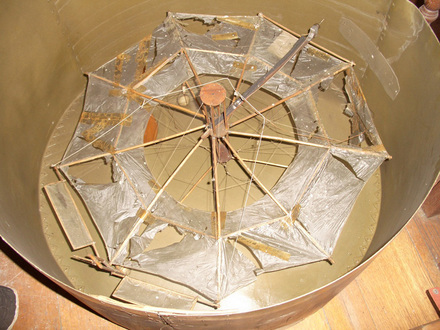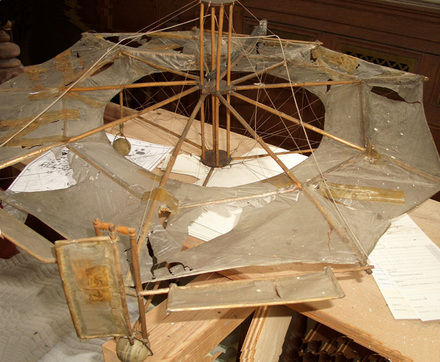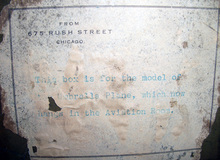Model for an “Umbrella Plane,” ca. 1910. Wood, wire, and varnished silk. Housed in a specially made fibre-board box. Museum objects.
Millionaire Harold Fowler McCormick (1872-1941) Princeton Class of 1896, was an aeronautics enthusiast and supporter of the work of the New York inventor William S. Romme (born 1867). Romme designed eleven unique airplanes including a circular plane, which became known as the McCormick-Romme cycloplane or “umbrella plane.”
Together with John D. Rockefeller, Jr., McCormick funded the research and construction of the umbrella plane, developed under the supervision of a twenty-year-old engineer named Chance Vought (1890-1930). A model of this aircraft hung in his Aviation room on 675 Rush Street in Chicago for many years, until the estate with donated to Princeton by one of McCormick’s step-sons Alexander Stillman.
“One of the first ultra-low aspect ratio designs was the McCormick Romme ‘Umbrella plane,’ which first flew on March 11, 1910. Designed by 20-year-old Chance Vought, it had a circular wing that was absolutely devoid of camber. Nicknamed the ‘Doughnut,’ the aircraft not only got airborne but also made controlled flights around its home field at Cicero, 111. About that same time in Britain, Lee Richard built a circular-wing monoplane with a conventional two-place fuselage reaching across the gap in the center. (A version of this aircraft flew in the great film Those Magnificent Men in Their Flying Machines.) Walter J. Boyne, “Aerial Oddities,” Aviation History 16. 4 (Mar 2006): 18, 20.


